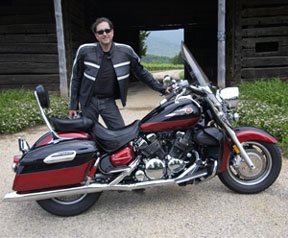Those are the thoughts that go through my mind when I read articles and reviews. Why shouldn't you think along similar lines? I wouldn't blame you. So here's the real deal about this posting: Being somewhat of a photo-nut I hear about lots and lots of photo-gizmos and gadgets. You should also be aware that having had the opportunity to play with so many cameras, lenses and accessories I've become numb to marketing hyperbole. Therefore... all the accessories I'm going to mention below are: THINGS I REALLY WANT!
MEMORY CARDS
First on the list are memory cards. Memory cards are the new "film" and as much as you can never have enough film, you can never have enough memory cards. If you've ever seen that dreaded, "Card Full" prompt on the LCD screen of your camera you know what I mean! Each year manufacturers of memory cards push the limits of storage. Merely a few years ago cameras would come with cards that were measured in megabytes, today cards that hold 32 gigabytes and more have become commonplace. So there is no excuse to run out of memory.
The coolest thing I've seen on the memory card front is the Eye-Fi card. Sold in 2 and 4-gigabyte models for still and video photography, the Eye-Fi marries a Wi-Fi transmitter with a memory card! Unfortunately they are available in SD format only and not Compact Flash.

Eye-Fi cards store photos or video just like a traditional SD memory card, and even look like one. But they save time and make sharing easy through using your Wi-Fi network by automatic and wireless uploading of photos and videos from your camera to your computer or an online sharing website. You can even choose to upload only selected media, or all new media.
The Eye-Fi card comes in various models with various features. The models are named; Home, Share and Pro. By using the Eye-Fi Home card, you can upload photos wirelessly from your camera to your computer (Mac or PC). Mac users can upload directly to iPhoto. No cables. No hassles.
With the Eye-Fi Share card, you can also wireless upload photos to your computer and you can also share your photos with friends and family with effortless uploading to Flickr, Picasa, Facebook, or to one of over 25 other sharing, printing or social networking websites. Eye-Fi Video cards offer the same ease of uploading video and will also handle still photographs. And the Eye-Fi Explore Video card also gives you access to a lifetime of geotagging, and one year of Hotspot access. So you don't even have to be near your computer.
I have a friend in Chicago whose cable provider allows him to connect his television to Flickr and run a constant slide show of his photos. I imagine that with the Eye-Fi card he could have a party, photograph his guests during the party, and his guests could view his photos as they are shot. Very cool tech!
ACCESSORY FLASH
Nearly as annoying as running out of memory is running out of light. Photography is all about light and sometimes there just isn't enough of it. When you're faced with that situation adding some more light is the only solution.
There aren't many choices when you need more light. You can either turn on some room lights, or add a flash. A surprising number of camera's have built-in flash units. Some do not. I, of course, own a flash-free DSLR. Which is where the problem arises. Every camera manufacturer, Nikon, Olympus, Canon, Pentax et al, use different connections/systems for the flash unit to communicate with the camera's exposure computer. So you must buy a unit which mates to your particular camera. You're not limited to the flash made for your camera there are many other brands that will do the job just make sure that you're buying the unit for your particular brand of camera. And don't forget extra batteries.
TRIPODS
Regardless of the camera you have, compact, DSLR or video, if you don't have a tripod you need one. Back-in-the-day the rule for tripods was "the heavier-the better". That is no longer the case unless you're a serious professional working in extreme lighting conditions.
As a snap-shooter you need a tripod for one main reason: to place yourself in the photo. You used to be able to place a camera on a stack of books or use a beanbag to get that shot but today's compact cameras are loath to stand by on their own. They're either too small or oddly shaped. I suggest that everyone that owns a compact digital camera buy a compact tripod like this pocket tripod.

If you're shooting video the main reason for a tripod is to stop camera shake, especially if you're using the long telephoto setting on your zoom. If you're shooting mostly video I'd also recommend a "fluid" head tripod. The fluid head is like having a tiny shock absorber in he tripod so as you pan and tilt the tripod smooths out the motion. You might also consider a fluid head tripod if you're shooting a lot of video with your still camera.












No comments:
Post a Comment